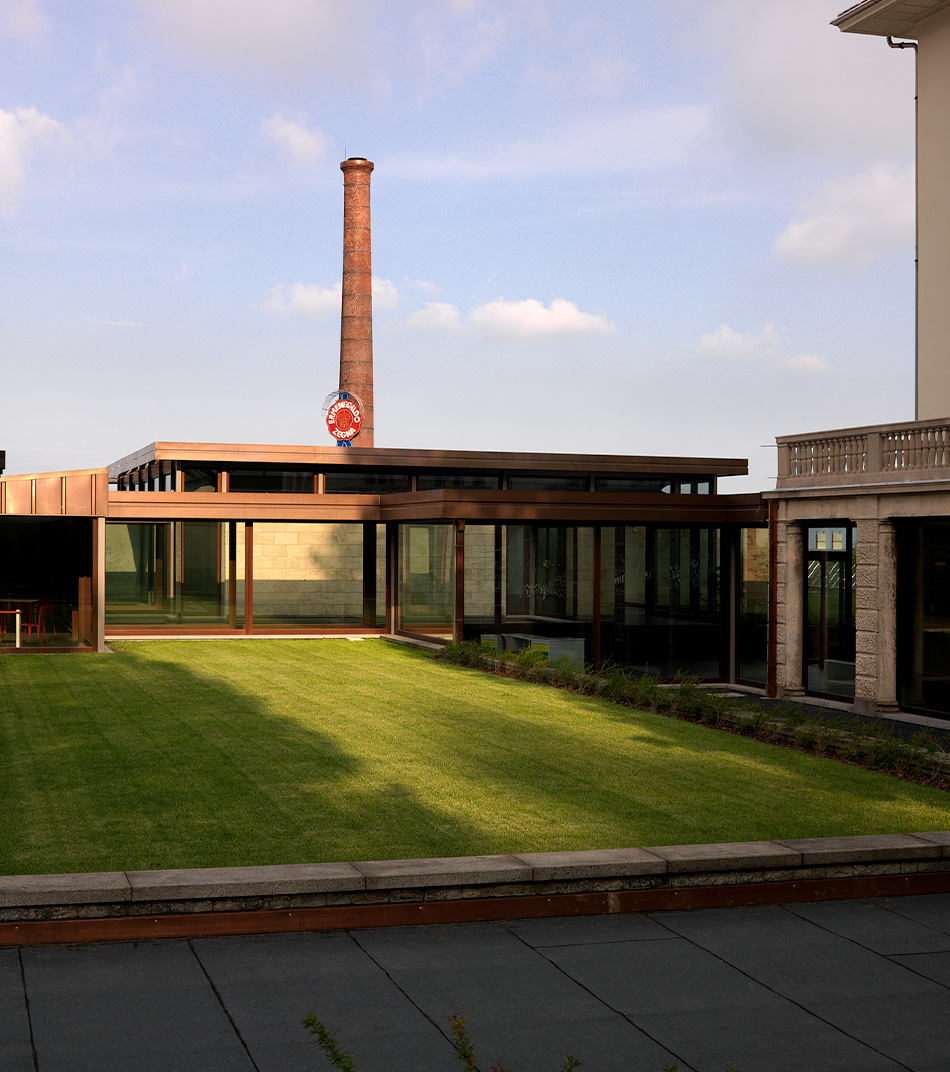Like all wool mills, the Zegna Mill has always needed large amounts of water. Wool working processes require conspicuous quantities and a certain quality of a natural resource that’s becoming increasingly rare and precious.
Washing, dyeing, processes that use steam and various types of finishing all require huge volumes of water.
The site where the wool mill was built in Trivero didn’t offer the water supply that streams like the Cervo, Ponzone, Sessera or Strona could ensure. From this viewpoint, the future of the Zegna Wool Mill was bound to be different, and in some ways unique, with respect to that of other wool mills founded previously or in same period in other parts of the Biella area.
Ermenegildo Zegna was not in a position to use what little water was available to generate motive power (the mill was “electric” and not “hydraulic” right from the start in fact), but he was determined to build his mill here in the uplands rather than on the valley bottom, thereby ensuring jobs for his fellow townsfolk, who would otherwise have been deprived of this vital opportunity for livelihood.
Leaving aside the question of motive power, to enable the Zegna Wool Mill to operate up here it was in any case necessary to secure access to all possible water resources, starting with the two brooks that carve through the land on either side of the mill – the Baso to the north-east and the Scoldo to the south-west – and whose channels run parallel before the former flows into the latter to form an affluent of the Ponzone.
The Zegna Wool Mill was thus built in a sort of little “Mesopotamia”, a land between two watercourses, small in this case but fairly reliable in terms of continuity. Despite their very modest flow rates, the Baso and Scoldo were the two liquid pillars on which the Trivero wool mill was founded.
Ermenegildo Zegna had to create his “stream” where there wasn’t one, a stream obtained mostly from the two closest watercourses, a stream that flowed not alongside or below the mill as in the valleys but that came into being inside the factory, almost drop by drop, from different sources.
In the past, there had been watermills on the Scoldo at Lora and Oro, and the Zegnas were entitled to use the water of this brook. The Baso, on the other hand, had to be channeled in ample ducts to feed the wool mill’s water cisterns for ready use and reserve tanks. All this without altering the natural course of the two brooks.
Plans to enlarge the wool mill, entailing a bigger water requirement to serve higher production rates, and secure a substantial supply of potable water (also serving housing and welfare facilities for the mill workers) made it necessary for Ermenegildo Zegna to acquire a number of hitherto unexploited springs on the flanks of Monte Rubello.
On the slopes of the summit dominated by the San Bernardo Oratory, a number of springs produced small but significant quantities of “good” water, filtered by the terrain and underlying rock substrates. The sale contracts of those springs, some of which dating from the early 1910s, are kept in the Zegna Archives.
The Zegna Wool Mill’s dependence on water was not changed by Ermenegildo Zegna’s decision to autonomously generate sufficient quantities of electricity. The electrification of Trivero at the beginning of the 20th century (largely thanks to local business people, including the father of the future Conte di Monte Rubello and his uncles, the Lesnas) enabled the industrialization of a township that would otherwise have been denied participation in the progress that the rest of the Biella area was enjoying.
That original initiative, however, would not have been sufficient to improve or increase textile production. To enlarge the mill and install more machines, more amps were needed. This, along with the desire to be as autonomous as possible, is the reason why Ermenegildo Zegna decided to build a hydroelectric plant fed by the Sessera.
The Piancone facility, which draws from a reservoir (Diga delle Mischie) via a penstock in an artificial tunnel, was opened at the end of 1938 and is still in service. In recent years, another two small hydroelectric plants have been built along the Sessera to boost the wool mill’s eco-sustainable energy production capacity.
Industry today means not only using water but also, above all, respecting water resources and giving pure water back to Nature. Here too, the Ermenegildo Zegna Wool Mill didn’t wait for water purification to become fashionable…
The fate of industry in this area is closely tied to that of its water resources. What’s the point of producing beautiful textiles if you discharge filthy water in the process? In water management, as in textile production, Ermenegildo Zegna was ahead of the times.


